Alan Judd, Martin Hovland0521819504, 9780521819503, 9780511269950
Table of contents :
Cover……Page 1
Half-title……Page 3
Title……Page 5
Copyright……Page 6
Contents……Page 7
Preface……Page 13
Acknowledgements……Page 14
Note on the accompanying website www.cambridge.org/0521819504……Page 15
Maps on the accompanying website……Page 16
Contributed presentations on the accompanying website……Page 17
1 • Introduction to seabed fluid flow……Page 19
2.1 THE SCOTIAN SHELF: THE EARLY YEARS……Page 25
2.2 NORTH SEA POCKMARKS……Page 26
2.2.1 History of discovery……Page 27
2.2.3 Pockmark size and density……Page 28
2.2.4 Pockmark morphology……Page 29
Erosive nature……Page 31
Partial infilling……Page 32
2.2.5 Evidence of gas……Page 33
The extent of shallow gas……Page 34
2.3.1 The South Fladen Pockmark Study Area……Page 36
Evidence of gas……Page 37
Evidence of pockmark growth and activity……Page 40
The Witch’s Hole……Page 42
Geophysical reconnaissance and sediment sampling……Page 43
Gas……Page 45
ROV surveys……Page 48
2.3.4 The Holene: Norwegian Block 24/9……Page 51
2.3.6 Gullfaks……Page 54
Geophysical reconnaissance……Page 55
ROV surveys……Page 57
Sediment gases……Page 58
2.3.7 Giant pockmarks: UK Block 15/25……Page 59
Gas analyses……Page 61
2.4 CONCLUSIONS……Page 62
Pockmarks and iceberg scours……Page 63
Giant blowout craters……Page 64
3.2.2 Hakon Mosby Mud Volcano……Page 65
Lyngenfjord: pockmarks, doming and high reflectivity……Page 67
3.3.2 The Norwegian Sea……Page 68
3.3.4 The Kattegat……Page 70
3.4.1 Eckernförde Bay……Page 74
3.4.2 Stockholm Archipelago, Sweden……Page 76
3.5 AROUND THE BRITISH ISLES……Page 77
3.5.2 ‘Freak’ sandwaves……Page 78
3.5.4 The Atlantic Margin……Page 80
Rockall Trough – the Darwin Mounds……Page 82
3.6.1 The Rías of Galicia, northwest Spain……Page 84
The lower slope – mud diapirs, mud volcanoes, and gas hydrates……Page 85
3.7.1 The Niger Delta and Fan……Page 87
3.7.2 The continental slope of West Africa……Page 88
3.9 THE ADRIATIC SEA……Page 90
Jabuka Trough……Page 91
3.10 THE EASTERN MEDITERRANEAN……Page 92
Active pockmarks and earthquakes……Page 93
3.10.2 Mediterranean Ridge……Page 94
3.10.5 Nile Delta and Fan……Page 97
3.11.3 Northwestern Black Sea……Page 99
Central Black Sea……Page 101
3.11.5 The ‘underwater swamps’ of the east Black Sea abyssal plain……Page 102
3.12.1 The Caspian Sea……Page 103
3.12.2 Lake Baikal……Page 104
3.13 THE RED SEA……Page 105
3.14.2 Seabed features……Page 106
3.14.3 Strait of Hormuz……Page 108
3.15.1 The Makran coast……Page 109
3.15.3 The eastern coast of the subcontinent……Page 110
3.16.4 Taiwan……Page 111
3.17.2 Timor Sea……Page 112
3.17.3 New Britain and the Manus basins……Page 113
Eastern Manus Basin……Page 114
Taupo Volcanic Zone……Page 115
3.18.2 Serpentine mud volcanoes near the Mariana Trench……Page 116
Sagami Bay……Page 117
Subduction zones……Page 118
3.18.6 Sea of Okhotsk……Page 119
The significance of the Sea of Okhotsk……Page 120
Chirikov Basin and Norton Sound……Page 121
Navarin Basin……Page 122
Shelikoff Strait……Page 123
3.19.3 The Aleutian Subduction Zone……Page 124
3.20.2 The Fraser Delta……Page 125
POCKMARKS……Page 126
3.21.1 Hydrate Ridge……Page 127
3.21.2 Axial Seamount……Page 128
The Eel Shelf and Slope……Page 129
3.22.2 Monterey Bay……Page 130
3.22.3 Big Sur……Page 132
3.22.4 Santa Barbara Channel……Page 133
3.23.1 Guaymas Basin, Gulf of California……Page 135
3.24.1 Costa Rica……Page 136
3.24.2 Peru……Page 137
3.25 THE CARIBBEAN……Page 138
3.25.1 Barbados Accretionary Wedge……Page 139
3.26 GULF OF MEXICO……Page 140
Migration and seabed features……Page 142
The Florida Escarpment groundwater seeps……Page 143
Blake Ridge……Page 144
3.27.3 Chesapeake Bay……Page 145
3.27.4 Active pockmarks, Gulf of Maine……Page 146
3.29.1 The Scotian and Labrador shelves, and the Grand Banks……Page 147
Scott Inlet and Buchan Gulf……Page 149
3.30 FINALE……Page 150
4.2.1 Coastal settings……Page 152
4.3 PLATE TECTONICS SETTINGS……Page 154
4.3.1 Divergent (constructive) plate boundaries……Page 155
Subduction zones and accretionary wedges……Page 156
Fore-arc basins……Page 157
Large sedimentary abyssal craters……Page 158
Hot spots and seamounts……Page 159
4.3.5 Serpentinite seamounts……Page 160
4.4 CONCLUSION……Page 161
5.2.1 Magma and volcanic fluids……Page 162
5.2.3 Hydrothermal circulation systems……Page 163
The recharge zone……Page 164
The reaction zone – introducing supercritical water……Page 165
THE DEPTH OF THE REACTION ZONE……Page 166
5.2.4 Exothermic hydrothermal systems……Page 167
5.3.2 Expelled pore water……Page 168
Assembling complex hydrocarbons……Page 169
Disassembling complex hydrocarbons……Page 170
5.4.2 Microbial methane……Page 171
5.4.3 Thermogenic hydrocarbons……Page 172
Petroleum……Page 173
Escape from the kitchens……Page 174
5.4.4 Hydrothermal and abiogenic petroleum……Page 175
Mantle-derived methane……Page 176
The Deep-Earth Gas hypothesis……Page 177
Biogenic vs abiogenic……Page 178
5.5 DISCRIMINATING BETWEEN THE ORIGINS……Page 180
6.1.1 The character and formation of gas bubbles……Page 181
6.2 GEOPHYSICAL INDICATORS OF SHALLOW GAS……Page 183
6.2.1 The acoustic response of gas bubbles……Page 184
Acoustic turbidity……Page 185
Intrasedimentary doming……Page 187
Bright spots……Page 188
Acoustic blanking and columnar disturbances……Page 190
6.3 GAS HYDRATES – A SPECIAL TYPE OF ACCUMULATION……Page 196
6.3.1 Nature and formation……Page 197
The nature of occurrences……Page 198
Gas hydrate formation at Hakon Mosby Mud Volcano……Page 199
6.3.2 Gas hydrates and fluid flow……Page 200
ODP pioneers drilling through the BSR……Page 201
ODP LEG 146, CASCADIA ACCRETIONARY WEDGE……Page 202
ODP LEG 204, HYDRATE RIDGE……Page 203
6.3.4 Other hydrate indicators……Page 204
6.3.5 Dissociation……Page 205
7.1 INTRODUCTION……Page 207
7.2 POCKMARKS AND RELATED FEATURES……Page 208
7.2.1 Distribution……Page 209
Action from above or below?……Page 210
Absences of evidence……Page 211
7.2.3 Pockmark activity……Page 212
7.3 MUD VOLCANOES AND MUD DIAPIRS……Page 213
7.3.1 The distribution of mud volcanoes and mud diapirs……Page 215
AZERI EXAMPLES……Page 216
Internal structure – the plumbing……Page 218
7.3.3 Mud-volcano emission products……Page 219
7.3.4 Mud-volcano activity……Page 220
7.4 RELATED FEATURES……Page 223
ADRIATIC SEA……Page 224
7.4.5 Red Sea diapirs……Page 225
Volcanic diatremes……Page 226
7.4.7 Sand intrusions and extrusions……Page 227
7.4.8 Polygonal faults……Page 229
7.4.9 Genetic relationships……Page 230
7.5 MOVERS AND SHAKERS: INFLUENTIAL FACTORS……Page 231
The stress environment……Page 232
Overpressure……Page 233
7.5.3 Fluid migration……Page 234
GRAVITY……Page 235
ADVECTION……Page 236
Fluid flow……Page 237
FORCED ENTRY……Page 239
FLOW ALONG FAULTS AND FRACTURES……Page 241
THE IMPORTANCE OF UNDERSTANDING THE PLUMBING……Page 242
USING THE ENERGY……Page 243
Migration models……Page 244
Earthquakes……Page 246
THE 1993 PATRAS EARTHQUAKE……Page 248
THE 1995 AIGION EARTHQUAKE……Page 249
CAUSE AND EFFECT?……Page 250
STORM WAVES……Page 251
TIDES……Page 252
OTHER WAVE TYPES……Page 253
LOADING……Page 254
The impact of ice sheets on groundwater flow……Page 255
BLOCK UK15/25 NORTH SEA……Page 256
7.6.1 Fundamental principles……Page 257
7.6.2 Explaining seeps……Page 258
Pockmarks……Page 260
Submarine canyons, spring sapping, and faults……Page 262
7.6.4 Mud volcanoes and diapirism……Page 263
Freshwater ice rafting……Page 264
Seep features on Mars……Page 265
North Sea pockmarks and seeps……Page 266
FISH……Page 267
An active pockmark off Oregon……Page 268
8.1.2 Deep-water cold seeps……Page 269
Subduction-related mud volcanoes……Page 270
8.1.4 Shallow groundwater discharge sites……Page 271
Lake Superior……Page 272
Norwegian deep-water corals……Page 273
HYDRAULIC THEORY……Page 274
Gulf of Mexico banks and reefs……Page 276
Volcanic corals……Page 277
The Galapagos Rift – where it all began……Page 278
Shallow-water hydrothermal fluid flow……Page 279
8.2.1 Microbes – where it all begins……Page 280
AOMs: a revolutionary consortium……Page 281
Microfauna of hydrothermal vents……Page 283
The ubiquitous bacterial mat……Page 284
BACTERIAL MATS AND FLOCS……Page 286
Siboglinids and the identi.cation of symbiosis……Page 287
VESICOMYIDAE……Page 289
LUCINIDAE……Page 290
8.2.3 Non-symbiotic seep fauna……Page 291
CRUSTACEANS……Page 292
The ‘ice worm’……Page 293
8.3 SEEPS AND MARINE ECOLOGY……Page 294
8.3.1 Geographical distribution……Page 295
8.3.2 Communities as indicators of seep activity and maturity……Page 296
VIGOUR……Page 297
8.3.3 Do shallow-water cold seeps support chemosynthetic communities?……Page 298
Shallow-water hydrothermal vents……Page 301
Methane oxidation in the water column……Page 302
Bubble deposition……Page 303
8.3.5 Is fluid flow relevant to global biodiversity?……Page 304
8.3.6 The ‘deep biosphere’ and the origins of life on Earth……Page 305
8.4.1 Fossil cold-seep communities……Page 306
9.2.1 North Sea ‘pockmark carbonates’……Page 308
9.2.3 Carbonate mineralogy……Page 309
9.2.4 Other modern authigenic carbonates……Page 311
Brine-lake carbonates……Page 312
9.2.6 MDAC formation mechanism……Page 313
9.2.7 Associated minerals……Page 315
Pyrite (FeS2)……Page 316
9.2.8 MDAC chimneys……Page 317
Chimney formation above or below seabed?……Page 318
9.2.9 Self-sealing seeps……Page 319
9.2.11 Carbonate mounds……Page 320
Carbonate reefs and mounds in other areas……Page 321
9.2.12 Fossil seep carbonates……Page 322
Ahnet Basin, Algerian Sahara……Page 323
A place called ‘Cement’……Page 324
9.3 OTHER FLUID-FLOW-RELATED CARBONATES……Page 325
Coastal salinas……Page 326
Pavillion Lake, Canada……Page 327
Lake Van, Turkey……Page 328
9.3.3 Whitings……Page 329
9.3.4 Carbonates and serpentinites……Page 331
9.4 HYDROTHERMAL SEEPS AND MINERALISATION……Page 332
9.4.1 Sediment-filtered hydrothermal fluid flow……Page 333
9.4.2 Anhydrite mounds……Page 334
9.4.3 Hydrothermal salt stocks……Page 335
9.5.2 Phosphates on seamounts, guyots, and atolls……Page 336
9.6 FERROMANGANESE NODULES……Page 337
9.7 FINAL THOUGHTS……Page 339
10.2 HYDROTHERMAL VENTS AND PLUMES……Page 341
Event plumes……Page 342
10.2.2 Plume composition……Page 343
10.2.3 Plumes and the composition of the oceans……Page 344
The influence of altitude……Page 345
10.2.4 Heating the oceans……Page 346
10.3.1 Detection and quantification……Page 347
10.3.2 Water quality……Page 348
Acoustic plumes……Page 349
Listening for seeps……Page 350
10.4.2 Eruptions and blowouts……Page 351
Measuring flow rates……Page 353
FLUXES FROM MUD VOLCANOES……Page 354
The global seabed flux……Page 355
10.4.4 The fate of the seabed flux……Page 356
Upwelling flows……Page 357
Bubble fate……Page 358
10.5.1 Rivers, estuaries, and lagoons……Page 359
Deep-ocean waters……Page 360
Carbonate platforms and coral reefs……Page 361
10.5.3 The in.uence of seabed methane sources……Page 362
10.6.1 Methane emissions from the oceans……Page 363
Fossil methane……Page 365
ICE AS A GAS CAP……Page 366
10.7 GLOBAL CARBON CYCLE……Page 367
10.8.1 Quaternary ice ages……Page 368
The geological thermostat……Page 369
10.9 AFTERWORD……Page 371
11.2 SEABED SLOPE INSTABILITY……Page 373
Fjords: the 1996 Finneidfjord Slide……Page 374
Open continental margins: the Storegga Slide Complex……Page 375
Open continental margins – lower slope: the Cape Fear Slide……Page 376
11.2.3 Why do submarine slopes fail?……Page 377
Seabed pore fluid pressure build up……Page 378
11.2.4 Predicting slope stability……Page 379
11.3.1 Blowouts……Page 380
SHALLOW-GAS BLOWOUT EXAMPLES……Page 381
LESSONS LEARNED……Page 383
11.3.2 Hydrogen sulphide……Page 384
Gas hydrates inside cased wells……Page 385
Shallow-water flows……Page 386
11.4.2 Trenching through MDAC……Page 387
Deep-water foundations……Page 388
11.5 ERUPTIONS AND NATURAL BLOWOUTS……Page 389
The mystery of the Witch’s Hole……Page 390
The Bermuda Triangle……Page 391
11.6.2 Exploiting gas seeps……Page 392
The Big Prize……Page 393
Exploration for hydrocarbons……Page 394
Sea-surface seep studies……Page 396
SEEP SPOTTING FROM SPACE……Page 397
Sniffer surveys……Page 398
COGNAC……Page 399
ESTRELLA……Page 400
11.7.1 Potential triggers……Page 401
International protection……Page 402
THE EUROPEAN COMMISSION……Page 403
NATIONAL PROTECTION……Page 404
References……Page 405
Index……Page 460
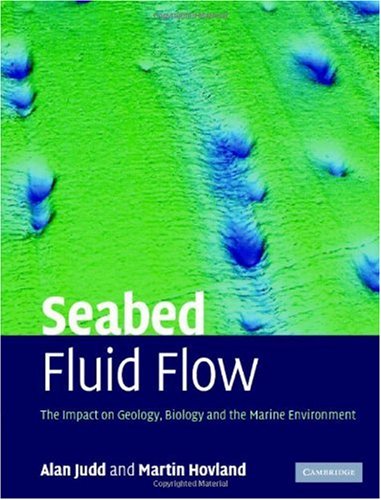

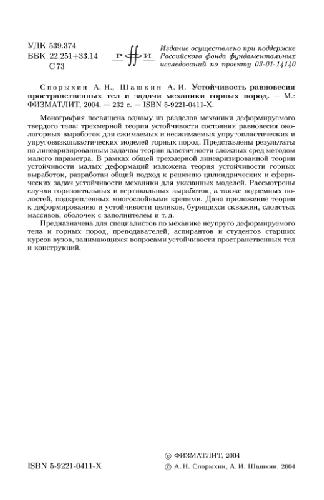

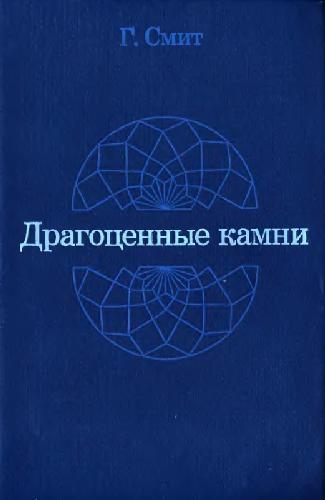
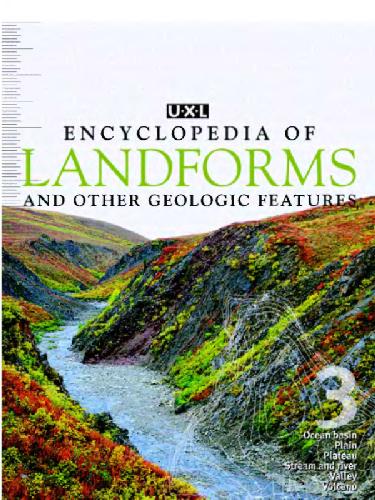
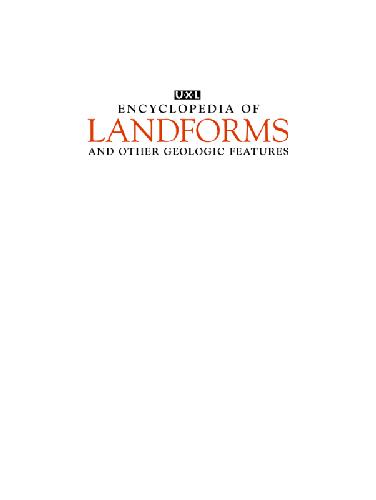
Reviews
There are no reviews yet.